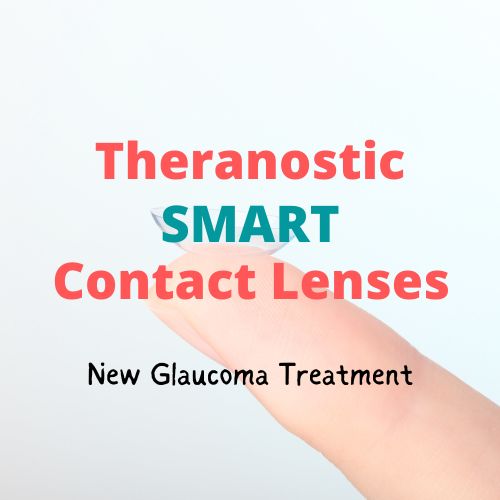Theranostic Smart Contact Lens may Treat Glaucoma?


Advances in technology may lead to a theranostic (aka smart) contact lens that treats glaucoma.
Early studies of a new type of contact lens to treat glaucoma are encouraging. The new type of “smart” contact lens is still under development but has shown promising results in the eyes of live rabbits and pigs whose eyes are similar to human eyes making them good test subjects for this new technology. These contact lenses are a type of device that senses and treats a medical condition. These types of devices are called theranostic devices. A newly coined word that combines therapeutics and diagnostic.
That means that this theranostic contact lens can both diagnose and treat the symptoms of glaucoma. It does that by measuring the intraocular pressure with sensors that can detect the change in the eye’s surface when it is being deformed by a buildup of intraocular pressure.
In a recent study researchers from Sun Yat-Sen University in Guangzhou, China tested an integrated wireless theranostic contact lens (WTCL) that consisted of sensing plates that were sandwiched (surrounded) by ultra-soft air dielectric film that could respond to changes in intraocular pressure.
When the sensors in the contact lenses detected a deformation in the eye’s surface caused by a buildup of intraocular pressure they sent an electrical signal that triggered the contact lens to deliver anti-glaucoma medication that reduces intraocular pressure by increasing the amount of fluid that drains through the drainage canals in the eye. The anti-glaucoma medication is stored in a hydrogel layer within the contact lens.
Having contact lenses that constantly monitor intraocular eye pressure would be the ideal way to treat glaucoma since intraocular pressure can vary based on activity levels and circadian rhythms.
The eye contains a fluid called aqueous humor that is being constantly produced and then drained through channels in the eye. When that fluid does not drain at an appropriate level, it causes the buildup of intraocular pressure.
In the experimental use of these contact lenses in rabbits and pigs, the lenses were able to successfully deliver anti-glaucoma drugs to gradually drop intraocular pressure by about a third within 30 minutes and maintained those lower levels for longer periods compared with the same drug delivered by eyedrop.
These theranostic glaucoma contact lenses can now begin human clinical testing.
Gregory Scimeca, M.D.
Ophthalmologist and Medical Director
The Eye Professionals
Our Locations
